Everything you need to know about blackout fabric
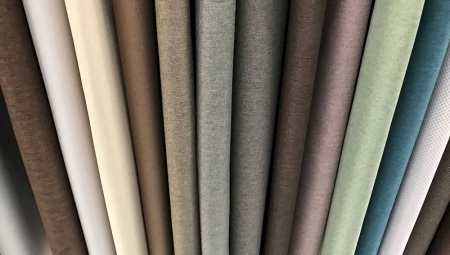
Blackout is a modern material used in the production of curtains and drapes. From the material of this article you will learn what it is and how it looks like, what advantages and disadvantages it has. We will tell you about its varieties, application and care nuances.

general description
Blackout is a light-proof textile that can trap up to 90-100% of the sun's rays. The material was developed in Finland not so long ago, but managed to gain popularity among a wide range of buyers.
It has a dense structure and interlacing of threads. Its name comes from the technical slang for blackout, cessation of light.

The classic canvas has a satin (satin) weave of threads. The fabric is pleasant to the touch, made from natural and artificial fibers, acrylic foam, special chemical components.
The color of the front side is very diverse. The wrong side is usually white, beige, milky. The curtain strip is traditionally black or dark gray.
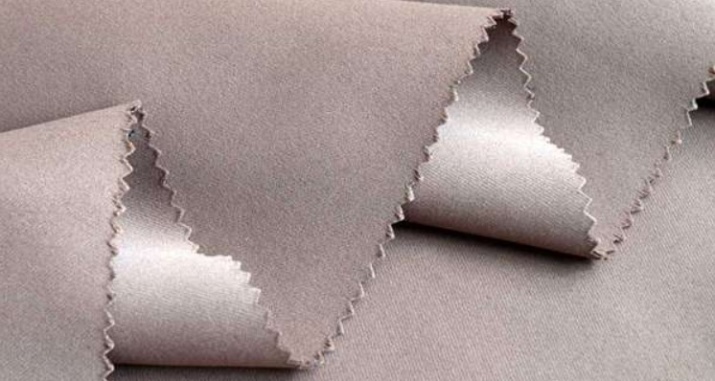
Features of production
The textile technology was developed by Rockland Industries in Baltimore. During manufacture, the fabric was covered with foam layers.
Shading is performed in 2 or 3 approaches. In the first case, the base material is first covered with black and then with a light (white) layer of foam. In the second, white, then black and light foam is applied to the base. Three-layer materials are considered the best.
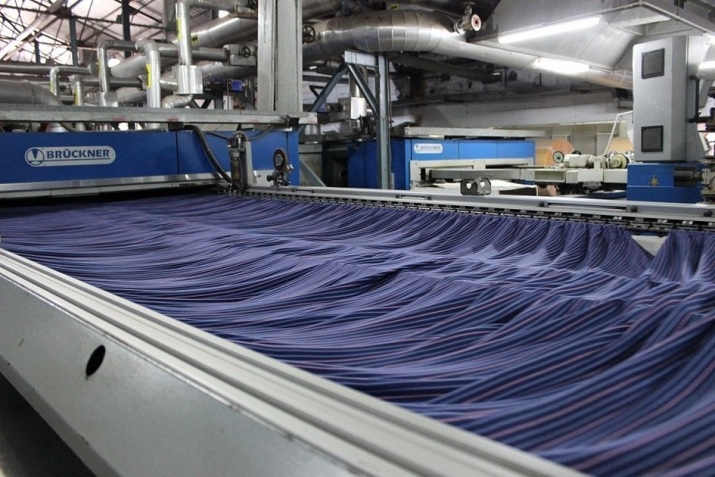
Each layer has its own purpose. The interior is made decorative, with a variety of designs and textures. Its main function is to please the eye.
The middle layer makes the base opaque and non-combustible. The light outer, or upper, facing the window, is responsible for repelling the sun's rays. Thanks to this, they do not penetrate the room.

The final stage of production can be painting, printing, surface treatment with an anti-dust, anti-pollution agent. The non-flammable type of processing is performed using different technologies. In one case, this is the use of a refractory impregnation that prevents combustion.
The second method involves weaving non-combustible threads at the time of creating the main fabric. This method is considered the best, since over time the impregnation loses some of its properties, while the threads do not lose them.
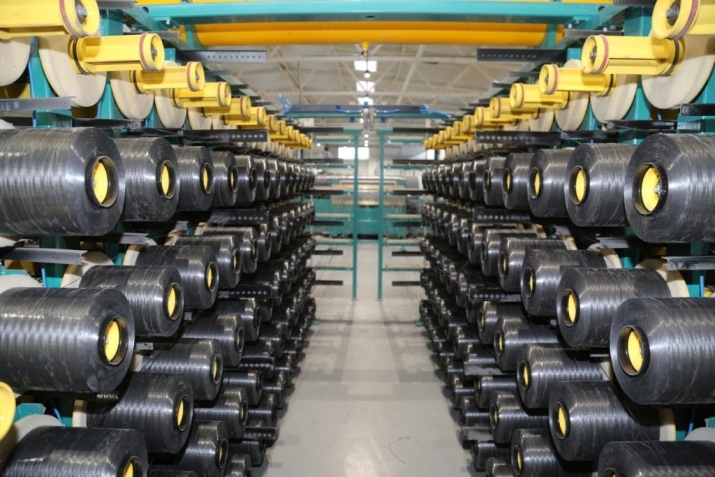
In addition, an opaque layer can be created using weaving technology. Each textile base is thin, the connection of the layers is different. Spraying is inferior to the weaving technique.
Fabric dyeing is done in different ways. For example, it can be dyed on one side using sublimation printing, or on both sides using pre-dyed yarns.
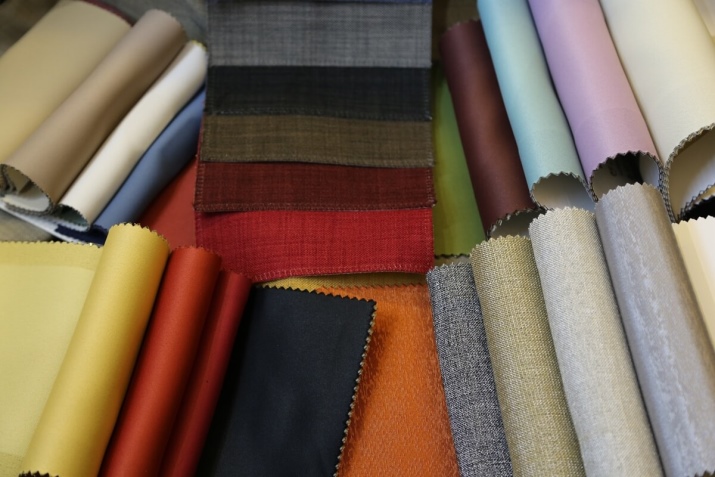
The width of the canvases varies. Narrow varieties are produced in widths of 140 and 150 cm. Less often in production, rolls of material with a width of 160 and 170 cm are found. These values depend on thermal printing, which is possible only at such a width.
The wide blackout is available in a width of 280-320 cm. Most often it is monochromatic, but modern production allows for the improvement of its decorative properties (for example, due to complex weaving).
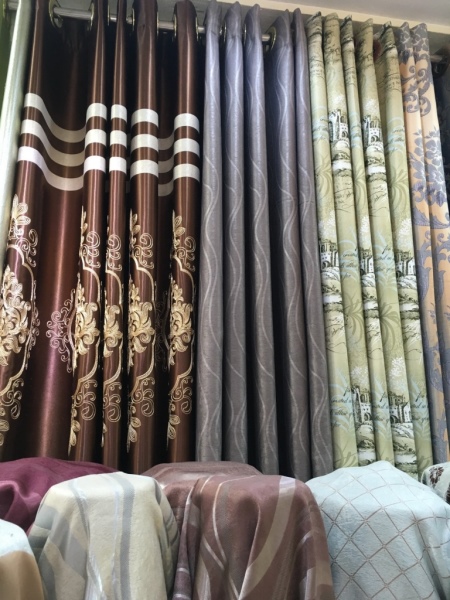
Specifications
In terms of external indicators, blackout may not differ from classic counterparts. This similarity is deceiving, it has a number of exceptional properties, one of which is inertness to the appearance of cracks.
Besides, the fabric does not create a sauna effect... She is able to keep the room cool. At the same time, it can have only a small degree of light transmission, bringing twilight into the room.
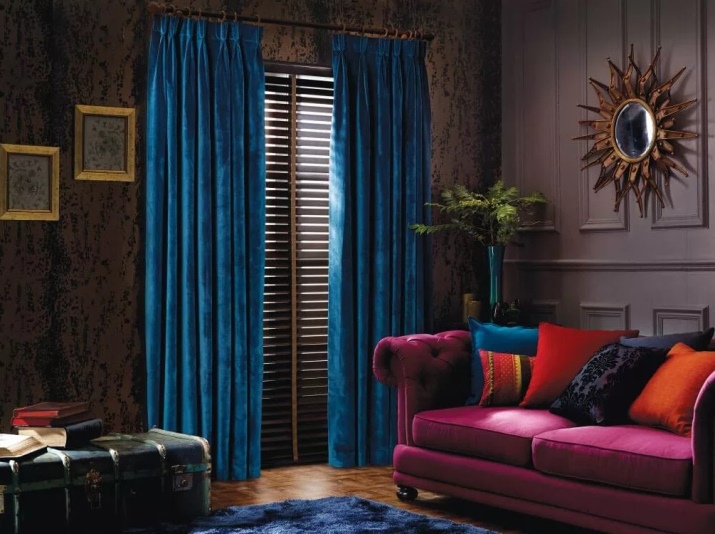
The material has a fairly high tensile strength, significant drape and wear resistance. It has medium slip, low crease, elasticity and edge flaking.
According to its hygienic properties, opaque fabric has significant indicators of vapor permeability and electrification. The values for dust holding and air permeability are low.

The hygroscopicity is low, ranging from 1-5%. Capillarity below average, optimal level of water resistance. Heat protection and electrification are high.
The density of the material is 220-280 g / m2. The material is resistant to deformation and is compatible with thermal printing technology. Due to its density, it has the property of absorbing up to 30% of external sounds.
The material is made in strict accordance with the standards of GOST R 50810-95. The fabric is non-flammable because it is highly resistant to fire. Blackout does not burn in direct contact, only melts.
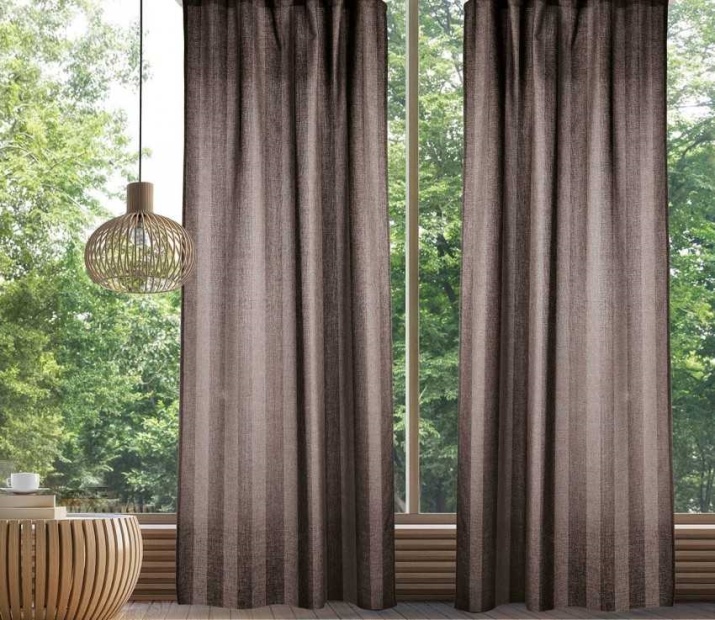
Advantages and disadvantages
Light-proof fabric has a number of advantages over traditional counterparts. Due to the complete blocking of sunlight, it is actively used in the design of windows in bedrooms and children's rooms.
Curtains made of opaque textiles protect the privacy of household members from prying eyes. Unlike ordinary curtains, they do not fade in the sun and do not wash out. During operation, they do not emit toxic substances.

Opaque fabrics are simple, practical and durable. They are little subject to mechanical wear. Their original properties remain unchanged after numerous washes.
The material itself drapes perfectly, it is resistant to crushing, it looks neat and fresh. Dries quickly after washing, easy to iron. Differs in the widest range of colors.

The color of the canvas can be light, neutral, soft muted, bright and dark. Depending on the type of fibers of the decorative layer, the material may have a matte or shiny texture.
It is easy to care for, due to its composition it has dust and dirt repellent properties. It doesn't need to be washed often and has a wide range of uses.
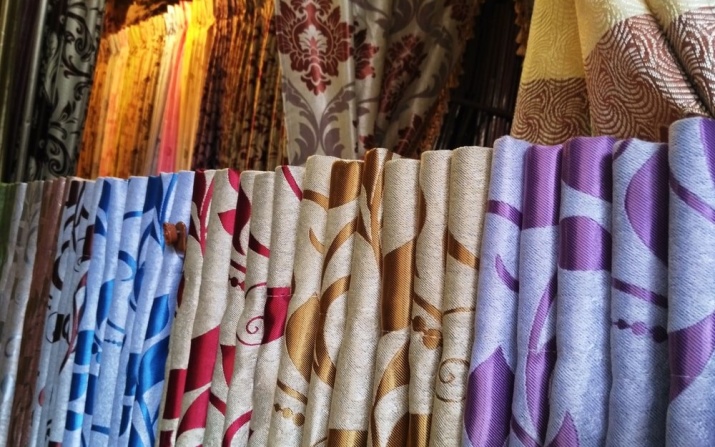
Due to its density, the material retains heat in the room and does not allow cold air to pass through. It is resistant to shedding and shrinkage when wet. Convenient to cut and sew, hypoallergenic.
It has an aesthetic appearance, looks stylish and status in the interior. The blackout curtain fits perfectly into the room of any style, being an expressive accent of the interior arrangement.
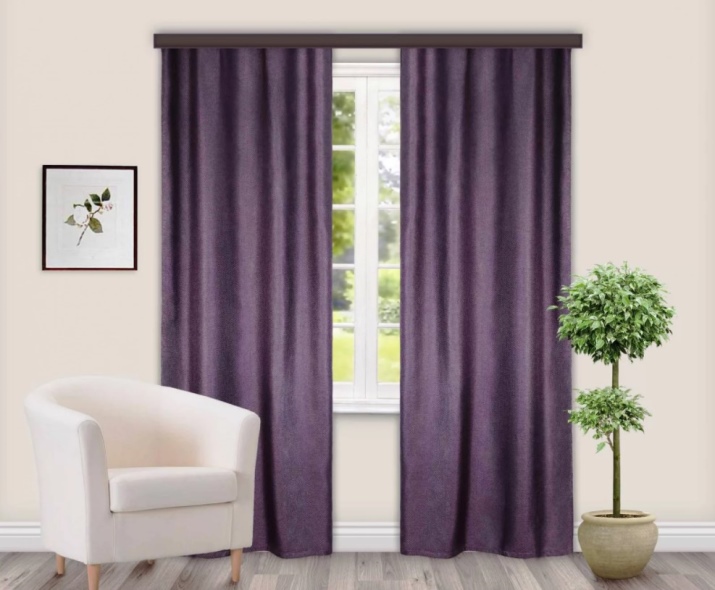
Along with its advantages, the material has several disadvantages. For example, they include production costs. In addition to the large cash investments, this takes a lot of time.
Due to the cost of production, blackout is much more expensive than traditional curtain fabrics. It is also bad that the material is limited in cut, therefore it often does not have a multilayer design.
The presence of synthetic components in its composition is not liked by fans of natural fabrics. However, this issue is controversial, since modern artificial raw materials used in production are in no way worse than natural materials.

Varieties
Blackout curtains can be classified according to different criteria. For example, it differs in design, type of raw materials used, color scheme, type of weaving.
The texture of the fabric allows you to use it for sewing classic, roller, Japanese curtains and pleats. The fabric is perfectly wound into a roll, folds, keeps its shape for a long time.
Most often, it is based on polyester fiber (for example, polyester). The texture of this fabric has a characteristic glossy sheen and a smooth surface.
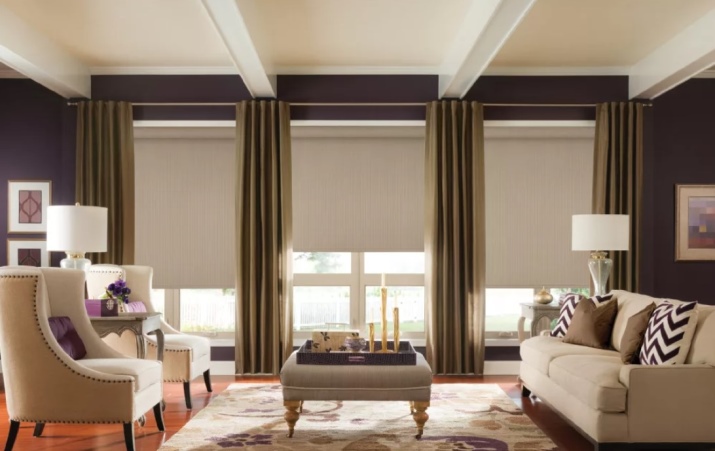
Flax and other synthetic threads are added to the polyester fibers. The weaving of such fabrics is traditionally satin or satin.
In addition, the fabric in production is woven not only from the same threads, but also from fibers of different structure and properties. Due to this, it is possible to achieve an interesting decorative layer effect.
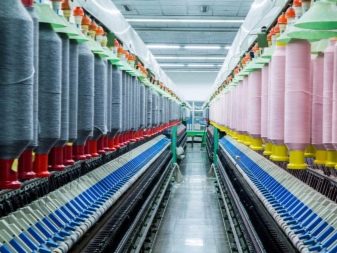
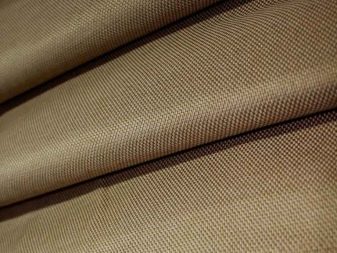
By the nature of the front surface, several types of textiles are distinguished:
- dyed (with dyeing in 1 color);
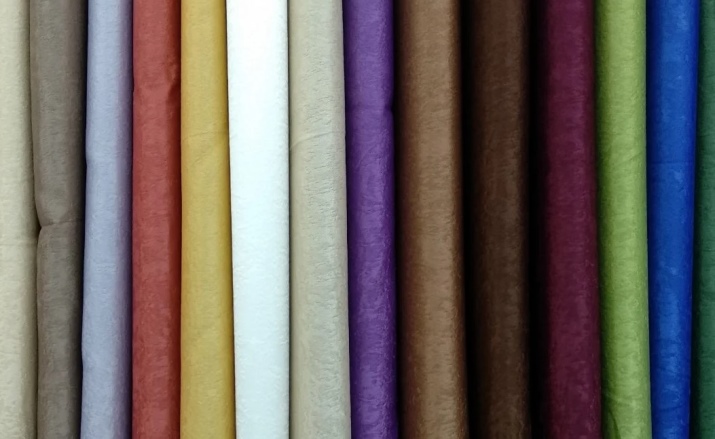
- with a pattern applied using the thermal printing technique;
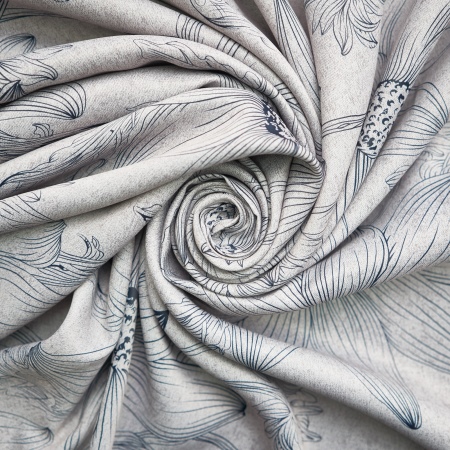
- jacquard (with a patterned weave of threads);

- linen (with linen weave texture);

- shiny (with a smooth satin thread);
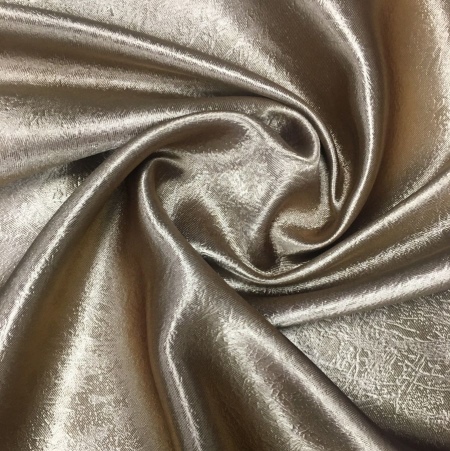
- double-sided (for zoning space);
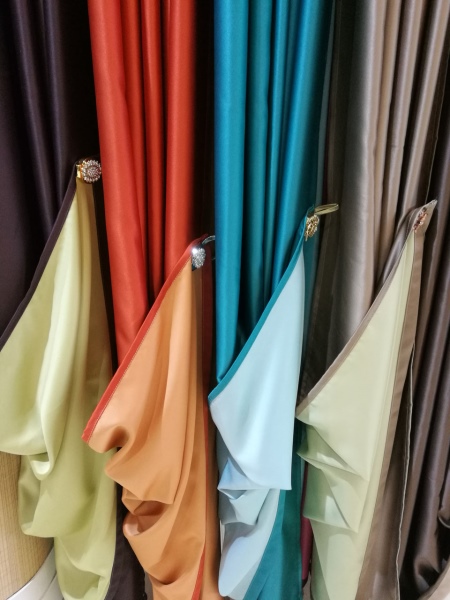
- matting (with burlap effect and triple weaving).
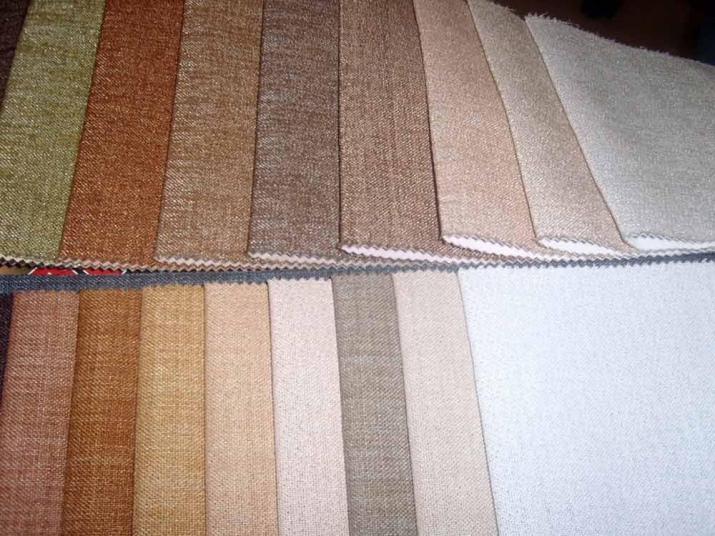
Along with this, the production uses the technique of combining smooth and pile surfaces. For this, velor threads are woven into the fabric. The canvas is created from cotton, wool, artificial threads.
Interior blackout can be very diverse. The simplest varieties are plain canvases with a matte or glossy front surface.

Due to different types of weaving, it can be simple or with a printed pattern, woven embossed pattern. In addition, on sale there are options with a variety of inserts in contrasting shades.
The material differs in the field of application. Based on this, the original, alpha and street are distinguished. The first is intended directly for the production of curtains, the second - for the design of large spaces.
Street is distinguished by the presence of a special composition, which is applied in order to further increase the wear resistance. Such textiles can be used outdoors.
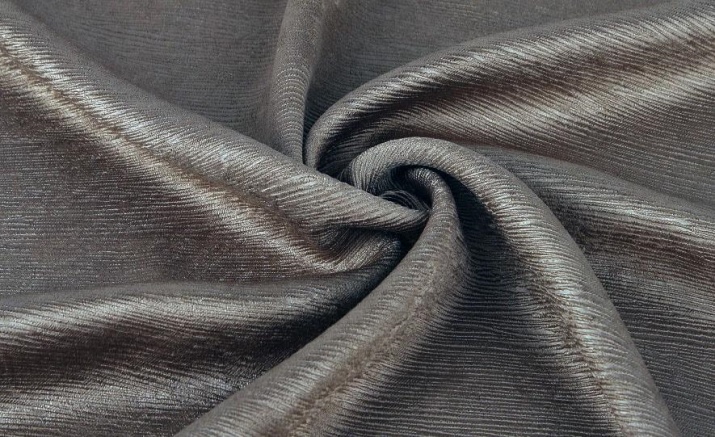
Application
In addition to decorating bedrooms and children's rooms, blackout is used to create comfort in the interiors of office premises, educational, and medical institutions.
It is bought for finishing windows and doorways of conference halls and business centers. They decorate the interior of cinemas. It is bought for darkening darkrooms. It is used in the design of nightclubs.
Moreover, the shape of the curtains can be very diverse.Classic rectangular curtains are sewn from blackout. Due to its structure, it is used for sewing roller blinds and blinds.
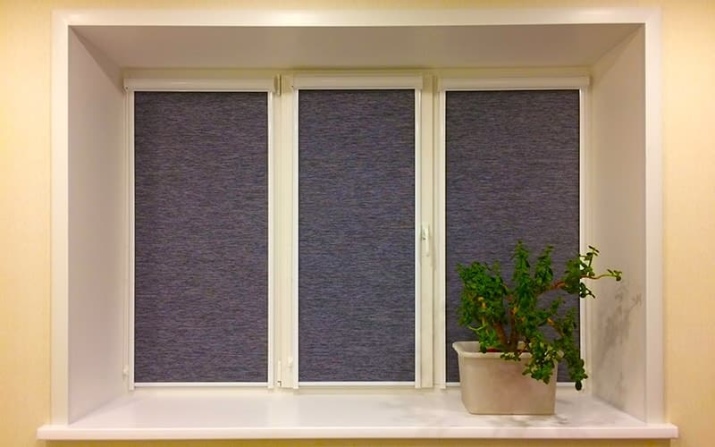
In addition to the curtain, the fabric is banner. Blackout curtains look great in the interior of kitchens, living rooms, they become decoration of the interior of country houses and city apartments.
In addition to window decoration, this material is used as accent wallpaper, cinema projector screens, planetarium domes. Blackout is part of the decoration of hotel rooms.
The material is bought for the manufacture of stage theatrical decoration (curtains and decorations). They are used to trim garden furniture. He found application in decorating gazebos, verandas, balconies and loggias.
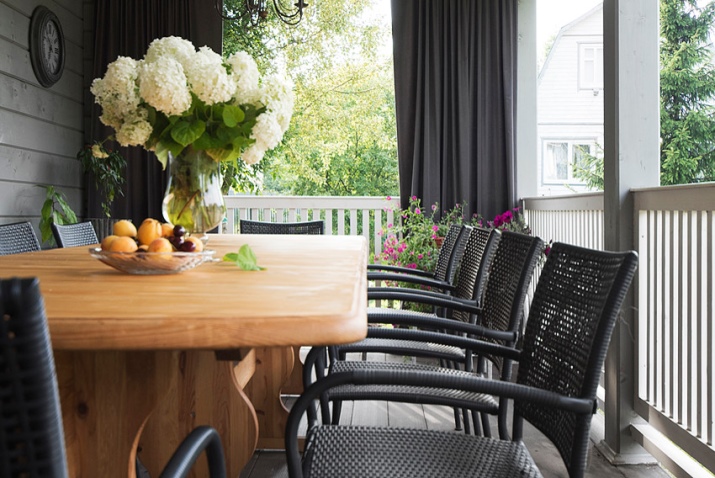
It functions as a tapestry in the cafe. In training conference rooms, blackout is used as a screen for a projector. It is on it that the image comes in when showing slides of presentations or videos.
It is used in the production of upholstery fabrics for upholstered furniture (sofas, armchairs, seats and backs of chairs). Some manufacturers use it to make decorative pillows, capes, bedspreads.
Banner fabric is used for the production of advertising banners and stretch marks. Besides, textiles are used for the production of partitions in the zoning of different parts of open-plan rooms.
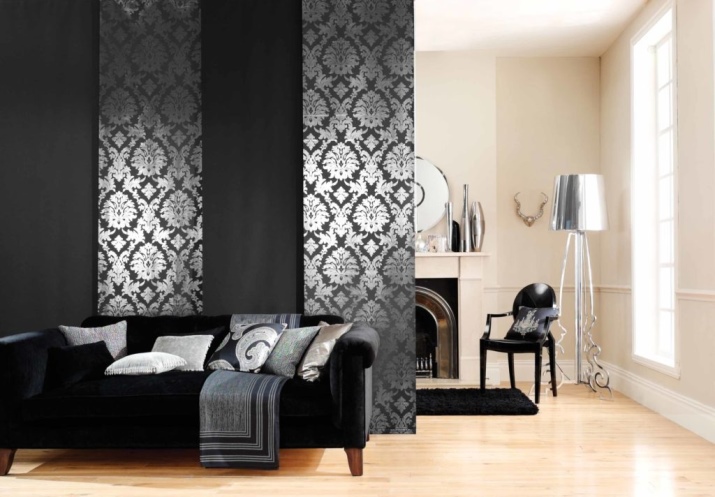
Blackout products are used as protective screens for temperature zoning. With the development of needlework, the material began to be actively used when sewing products using the patchwork technique.
It is used to make appliqués. It is perfectly cut with scissors, due to its low crumbling, it allows you to create aesthetic panels that can be used to decorate the walls of rooms for various purposes.
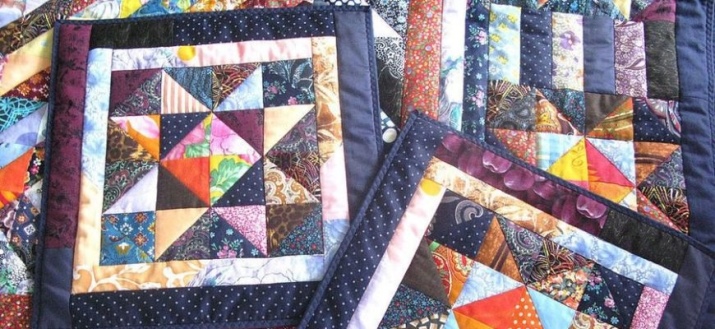
Nuances of care
Blackout is not picky to use and care for. To keep it as fresh as possible, simple basic rules are enough. Washing can be hand or machine.
It should be washed no more than several times a year, followed by ironing and hanging. It is best to wash on a delicate cycle. The temperature of heating the water in the drum should not exceed 40 degrees.
The optimal time is no more than 1 hour. For washing, you need to use special detergents. Do not use bleach or chlorinated substances.
The fabric must not be wrung out at high speeds. The maximum allowable value is 400 rpm for no more than 10 minutes. Do not wash with other fabrics.
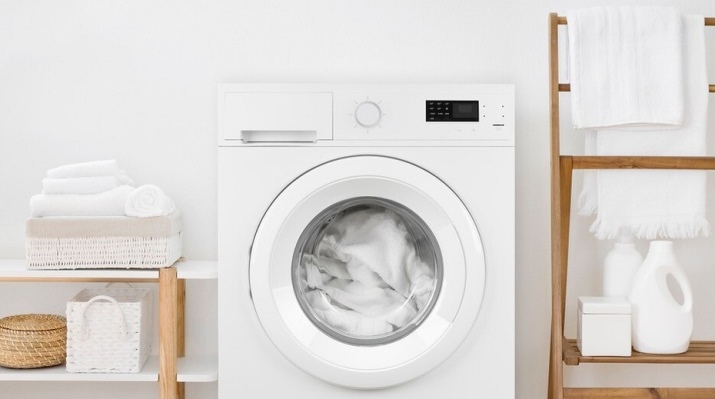
Drying the fabric should be natural, in a well-ventilated area. Dry cleaning is allowed, steaming is undesirable. Store blackout products folded in a closet in a dry room.
You need to iron the curtains with a warm iron. If the temperature is too high, the bonds between the layers can be broken and the fibers of the backing can be damaged.
The ironing mode is no more than 130-150 degrees (ironing products from synthetic fabrics). Some types of material do not need ironing at all.

How to choose?
Products made of opaque material are selected based on physical, mechanical and hygienic characteristics, as well as the needs and preferences of the buyer.
If curtains are needed for zoning space, take two-sided type products. They are the same color and have an internal light-blocking layer.
The texture is selected at its own discretion or taking into account the texture of the textiles available in the room. Somewhere the matting will look better, if the interior uses a material with gloss, you should choose a similar one.

The color scheme should be in harmony with decoration, accessories, furnishings, textiles. It is not at all necessary to select the material to match, it is enough to choose the shade of the desired color. This will make the space multifaceted.
If the room is small, it is better to choose a blackout in light shades. It will visually enlarge the space, relieve it of rigid boundaries, and fill it with coziness. A dark or bright shade is appropriate for large rooms.
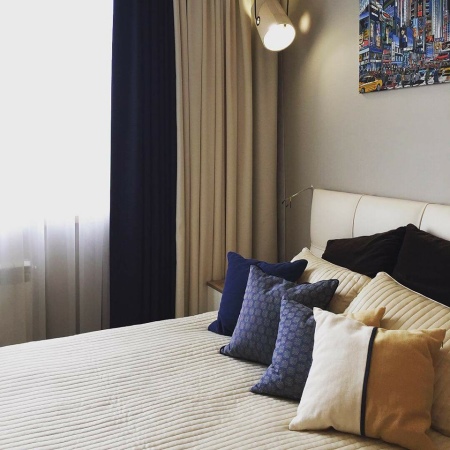
When choosing products with a picture, they rely on the size of the room, its style, theme. It is better to take a curtain material without a print in a small room. In a large one, a large pattern will be clearly visible.
If the style is minimalist, the curtains should be solid. This creates a spacious effect. If the style requires decor, a product with a print or drapery, frill is selected.
In order not to buy a fake, you need to look at the light through the material. The density of real textiles is so high that it will not show through. The fake transmits a lot of light and does not meet international safety standards.
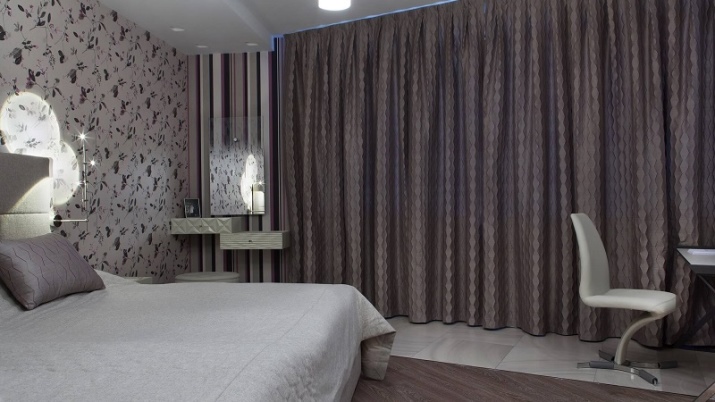
High-quality material has a dense, uniform structure of weaving of threads. It is slightly looser at the weaving of the matting. However, the level of fabric performance is quite high.
When buying a product, you need to pay attention to the quality of tailoring. Curves, skipped stitches, large stitches are typical signs of counterfeit products. An even stitching with a small pitch is a sign of quality.










